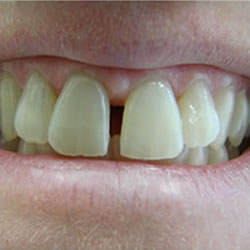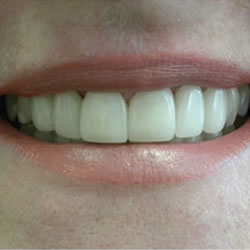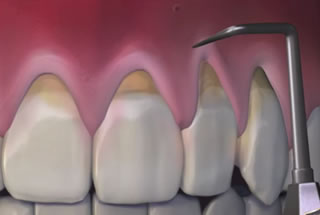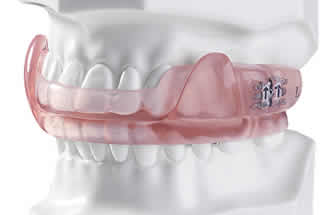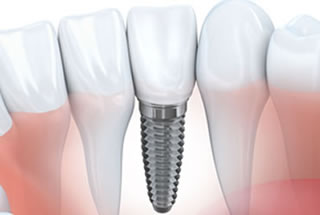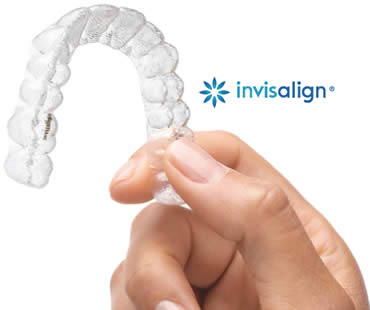
Invisalign Teen is a revolutionary way to straighten your adolescent’s teeth without the hassle of traditional metal braces. Invisalign utilizes a system of clear, removable aligner trays that are custom fit to your teen. The aligners are worn over the teeth and changed for a new set every two weeks. Over time, your teen’s teeth move into place, resulting in a beautiful, straight smile. If you are considering Invisalign Teen, make sure you learn the facts.
- With proper use, Invisalign is capable of treating mild to more extreme orthodontic problems. This includes underbite, overbite, gaps, and excessive crowding.
- Because they are removable, Invisalign allows your teen the flexibility to play sports without worrying about damaging the appliance. Musicians are also able to play their instruments without wires and brackets getting in the way.
- Your teen can continue to enjoy favorite foods with Invisalign, unlike traditional braces that come with a long list of foods that should be avoided.
- Invisalign aligners are easily removed for cleaning and tooth brushing and flossing.
- The normal treatment time is approximately the same or less as with metal braces, but will depend largely on the condition of your teen’s teeth.
- For optimal results in the least amount of time, it is recommended that your teen wears the Invisalign aligners 20-22 hours per day. Invisalign Teen has a built-in indicator that alerts your orthodontist if the aligners are being worn the minimum about of time required.
- Your teen will enjoy less time at the orthodontist’s office with Invisalign. Traditional braces require routine adjustment and also often have broken brackets and wires that need repair. With Invisalign, your teen only needs an office visit every 4-6 weeks.
- Most adolescents who need orthodontics are candidates for treatment with Invisalign. Your teen should be evaluated by an orthodontist who is a qualified Invisalign provider.
Contact your orthodontist to find out if treatment with Invisalign Teen is offered so your child can start enjoying the benefits of a perfect new smile.
If you need a dentist in Toronto contact us today

One of the newest ways to spruce up your look is to correct your teeth with Invisalign. This is an orthodontic solution that allows your teeth to be straightened without having to wear unsightly or embarrassing traditional braces. Invisalign allows you to improve your smile without affecting your eating habits, oral care routine, or self-esteem throughout the treatment process.
Description:
A series of customized plastic aligners are created to wear over your teeth to gradually move them into better position. You are able to see your treatment plan on a computer before treatment even begins, and your dentist monitors progress during checkups to make sure things are changing as desired. The clear aligners with Invisalign are popular because they are nearly invisible, can be removed for cleaning and eating, and are comfortable without causing irritation.
Correction:
Invisalign corrects various dental issues, including crowded teeth, gaps, overbites, underbites, or crossbites. Dentists often advise wearing retainers after treatment to ensure that teeth remain in their new position.
Process:
Once you select a dentist for your Invisalign treatment, an examination and discussion of goals will determine if this type of orthodontics is right for you. If you are a good candidate, a mold will be made of your teeth as well as a three dimensional image to help your dentist determine your treatment plan.
Maintenance:
Invisalign aligners are easily cleaned when removed from your mouth with gentle brushing and rinsing. You can perform your normal oral hygiene routine before returning the aligners to your mouth.
Schedule your appointment at our Toronto dental office

Being a teenager can be difficult, and being a teen whose smile could use some improvement can be even more difficult. If your teen suffers from gapped, crooked, crowded, or misaligned teeth, you may be looking into Invisalign with your teen’s orthodontist as a smile solution.
In the past, metal braces were the standard for teens, leading to “metal mouth” smiles and the worry that food is caught there during lunch or after snacks. Metal braces can lead to even more self-consciousness for your teen. Using Invisalign will lead to the same results as traditional metal braces. While metal braces use wires and brackets to straighten teeth, Invisalign uses clear plastic trays, allowing your teen’s process of tooth straightening to be less obvious.
The Invisalign process begins with impressions and x-rays, providing valuable information regarding the current condition of your teen’s teeth. The mold made from the impressions serves as the reference for creating the custom-made Invisalign trays. A series of trays are used, gradually altering the teeth, leading to a more comfortable straightening process.
Invisalign trays are removed before eating, eliminating the trepidation associated with eating in public with traditional metal braces. Because there is no hardware to dislodge, there are no food restrictions, and your teen may continue to enjoy whatever foods desired.
Your teen will need to have good oral hygiene habits. Flossing once a day and brushing after mealtimes or at least twice a day is best. Invisalign trays are removed prior to these activities, allowing for an ease of oral care not provided by traditional braces.
Be sure your teen wears the Invisalign trays as recommend by his or her orthodontist. In order to maximize Invisalign effectiveness, your teen must wear the trays at all times, except during mealtimes or when brushing or flossing.
If you live in the Toronto area contact us today
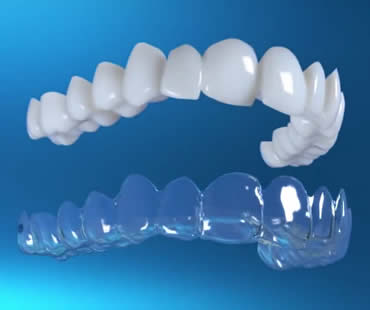
If you are considering straightening your teeth, you may be looking into various orthodontic options. One treatment for correcting a crooked or overcrowded smile is Invisalign. Invisalign uses a clear set of BPA-free plastic trays called aligners to straighten teeth without the metal and brackets associated with traditional braces. The following are some common questions you may have about Invisalign:
Who is a good candidate for Invisalign? Patients who have healthy teeth and gums are usually good candidates for Invisalign. Adults, teens, and older children whose teeth, including their second molars, have grown in completely can be considered for treatment with Invisalign.
What kinds of problems can Invisalign correct? Invisalign corrects the same dental problems as traditional braces, including simple to severe overcrowding, gaps, crossbite, overbite, and underbite.
How long does Invisalign treatment take to complete? Most Invisalign cases are completed within one year. However, the exact amount of treatment time is dependent on your individual situation.
How long do I have to wear the aligners each day? You will remove the Invisalign aligners when you eat, drink, or clean your teeth. Otherwise, the aligners should be worn for a recommended 22 hours per day to achieve the desired results.
Are there food restrictions with Invisalign? Because you remove the aligners when you eat, there are no limitations to the types of food you can eat while undergoing treatment.
Are retainers necessary with Invisalign? Once you have completed treatment, you will need to wear retainers while you sleep to ensure your teeth stay perfectly straight.
To determine if Invisalign is a viable option for your specific orthodontic needs, you should schedule a consultation with an Invisalign trained dental professional where you can ask additional questions specific to your case. No matter what stage of your life, Invisalign offers a comfortable, state-of-the-art approach to beautifying and improving the quality of your smile.
If you need a dentist in Toronto contact us today

Having straight teeth is a goal from young people through mature adults, and achieving a great smile without having to wear braces is a wonderful benefit. Awkward moments of a mouth full of metal, food particles stuck in your smile, and painful wires poking your cheeks are all erased. How do you make this happen? The answer is Invisalign.
Invisalign is an orthodontic solution that involves wearing a series of clear plastic aligners that fit right onto your teeth, and move them using slow pressure. They are nearly invisible and can be removed at any time, allowing you to follow your usual eating and hygiene routines.
The first step is taking impressions of your teeth and making a digital 3-D image so that an exact treatment plan can be created. You will be able to see how your teeth should look at each treatment stage. Your customized aligners will be made in a lab so that they fit comfortably yet do their job.
You will need to wear your aligners during the day and while you sleep, but remove them for eating and hygiene. You can even remove them for special occasions, as long as you strive to wear the aligners 22 hours each day. Roughly every two weeks, you will change to a new set of aligners that will advance you to the next stage of treatment. You will see your dentist about every six weeks for checkups.
Invisalign treatment lasts about a year for adults and about two years for teens. Your progress will be visible throughout treatment, motivating you to continue wearing them to transform your smile. Once your treatment is complete, you’ll have beautiful straight teeth and very few complaints about your orthodontic experience.
Our dental office is located in Toronto

Feeling unhappy with your smile can leave you wondering how you can obtain a stylish new look. Instead of being turned off by traditional treatments like metal braces, consider the modern approach of Invisalign clear aligners.
This revolutionary treatment involves wearing clear plastic aligners made just for you to gently move your teeth into better positions. They are practically invisible and are removable for eating and cleaning. The smooth material makes them comfortable, and they do not have any bothersome metal brackets or wires.
If you are interested in Invisalign treatment, the first step is finding an orthodontist or dentist who provides this service. Not every professional is trained in this method, so look for a certified provider of Invisalign. Once you identify your choices, select the provider who is convenient, experienced and gives you confidence in your treatment.
Your initial appointment will allow the professional to examine your mouth to make sure you are a good candidate for Invisalign. Unless you have poor oral health or severe teeth problems, most people qualify for Invisalign. The doctor will then prepare a treatment plan to guide your case and create your aligners. An impression of your teeth, X-rays, and photos will be taken to help with the process. A 3-dimensional image will be developed to help with your treatment plan, and also to allow you to see how your teeth will improve at each stage of the process and provide a timeline.
Once your aligners are ready, you’ll begin wearing them for about two weeks at a time and then switch to a different set of aligners in the series your doctor gives you. A checkup at the office is required about every six weeks to monitor your progress and get more aligners in the series as needed. The process will continue until treatment is complete, often in about one year. Then you’ll be ready to show off your brand new smile thanks to Invisalign.
If you live in the Toronto area contact us today







 E-Mail Us
E-Mail Us  416-595-5490
416-595-5490